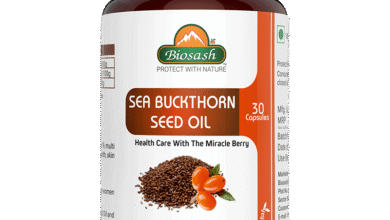
Microbiome Solutions for Farming: Boosting Productivity the Natural Way
In today’s world, sustainable farming is not just a trend—it’s a necessity. Microbiome Solutions for Farming are leading the charge in revolutionizing how crops grow, how soil regenerates, and how farmers reduce their dependency on chemical inputs. These innovative biological tools harness the power of beneficial microbes to improve soil health, enhance nutrient uptake, and ultimately increase crop productivity.
This blog explores how microbiome-based farming techniques are becoming the cornerstone of modern, eco-friendly agriculture.
What Are Microbiome Solutions for Farming?
Microbiome refer to the use of microbial products—such as bacteria, fungi, and other beneficial organisms—to enrich the soil and support plant health. These solutions mimic natural processes, promoting a balanced ecosystem around plant roots known as the rhizosphere.
Instead of relying solely on synthetic fertilizers or pesticides, microbiome farming empowers nature to do the work, making agriculture more sustainable and environmentally responsible.
Why Microbiome Farming Is Gaining Global Attention
Modern farming practices often strip the soil of essential nutrients and microbial diversity. As a result, soil fertility declines, leading to lower crop yields and greater vulnerability to pests and diseases.
Here’s where Microbiome Solutions for Farming come in:
- Enhanced Soil Health: Microbial solutions reintroduce beneficial organisms that fix nitrogen, decompose organic matter, and enhance nutrient availability.
- Stronger Plant Immunity: Certain microbes can trigger a plant’s natural defense mechanisms, making crops more resistant to diseases and environmental stress.
- Better Crop Yields: Healthier soils and stronger plants lead to better productivity and higher-quality harvests.
- Reduced Chemical Use: With microbes doing the heavy lifting, farmers can reduce their reliance on synthetic fertilizers and pesticides—saving costs and preserving ecosystems.
How Microbiome Solutions Work in the Soil
The key to microbiome farming is creating a thriving microbial environment in the soil. Here’s how it works:
- Seed Coating: Microbes are applied directly to seeds, allowing them to colonize plant roots as they grow.
- Soil Application: Beneficial microbes are added to soil through irrigation or direct mixing, restoring balance and improving structure.
- Compost Enrichment: Microbial inoculants can be used in composts to accelerate decomposition and increase nutrient density.
These methods help create a living soil system where plants and microbes work in harmony.
Key Benefits of Microbiome Solutions for Farming
1. Improved Soil Fertility
Microbiomes increase the bioavailability of nutrients like phosphorus and nitrogen, leading to more fertile soil without the heavy use of chemical fertilizers.
2. Higher Crop Resilience
With enhanced root systems and natural defense responses, crops become more tolerant to heat, drought, and pathogens.
3. Environmental Protection
Reducing synthetic inputs means fewer chemical runoffs into nearby water bodies, preserving biodiversity and preventing pollution.
4. Cost Savings for Farmers
By reducing the need for expensive agrochemicals and improving yields, farmers can enjoy better profit margins.
Popular Microbial Products in Agriculture
Many microbiome-based agricultural products are already making a mark:
- Rhizobacteria: Promote root growth and nitrogen fixation.
- Mycorrhizal Fungi: Enhance water and nutrient absorption through symbiotic relationships with plant roots.
- Biostimulants: Support plant metabolism and growth under stress conditions.
- Compost Teas: Liquid solutions rich in microbes, used to enhance microbial activity in soil.
Each product type serves a unique function, depending on the crop and the condition of the soil.
Challenges and Considerations
While Microbiome Solutions for Farming offer many benefits, they are not without challenges:
- Climate and Soil Dependency: The effectiveness of microbial products can vary based on soil type, weather, and crop species.
- Storage and Shelf Life: Live microbes require proper storage to remain viable.
- Adoption Barriers: Farmers unfamiliar with biological inputs may hesitate to adopt these solutions without proper education and support.
Despite these challenges, ongoing research and farmer education programs are making it easier to adopt microbiome-based practices on a larger scale.
The Future of Farming with Microbiomes
The future of agriculture lies in sustainability, and Microbiome Solutions for Farming are central to that mission. As more farmers witness the long-term benefits of healthy soils and stronger plants, microbial solutions are set to become standard practice in global farming.
From small organic farms to large-scale commercial operations, the microbiome is proving to be a game-changer. These solutions are environmentally friendly, economically viable, and scientifically supported—paving the way for a more resilient agricultural future.
Conclusion: Microbiome Solutions for Farming Are the Sustainable Path Forward
Microbiome Solutions for Farming are more than just a trend—they are the foundation for sustainable, high-performance agriculture. By enriching the soil with beneficial microbes, farmers can grow healthier crops, reduce chemical usage, and increase their profitability.
With proper education and implementation, these biological innovations have the power to transform the future of farming for generations to come.
If you’re in the agriculture industry looking to future-proof your yields, it’s time to explore microbiome farming solutions.




